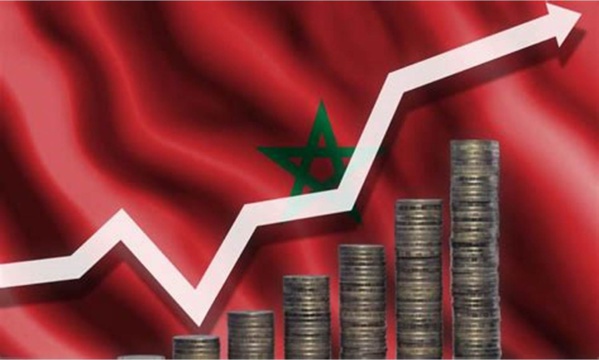On the occasion of International Day for Women’s Rights, Morocco’s High Commissioner for Planning (HCP) said that a staggering 91% of the wage disparity between men and women can be attributed to gender bias, with the remaining 9% explained by individual differences.
The High Commission for Planning revealed that the latest data shows a concerning escalation in gender discrimination in work environments, particularly regarding wages.
In a memorandum titled “Gender Wage Gaps in Urban Areas Without Gender Discrimination,” the commission delineated gender discrimination into two categories: “male advantage,” comprising 46% of the wage gap, and “diminishing female characteristics,” contributing up to 45%.
The commission noted that valuing male traits over female traits perpetuates wage disparities.
The memorandum drew attention to the disparities across wage categories, revealing pronounced gender discrimination among lower-paid workers, where 93% of the wage gap was explained by gender bias.
Notably, disparities were also evident among higher-paid workers, with 79% of the wage gap attributed to gender discrimination.
Analyzing the relationship between gender, wages, and occupation, the comission found that men are disproportionately represented in higher positions.
This disparity was most stark among craftsmen, skilled workers, and non-agricultural manual workers.
Regarding the social distribution of wages, the memorandum noted relative equality among the lowest-paid workers but highlighted significant disparities among other wage categories, particularly among the highest-paid workers.
The commission stated that the wage gap in Morocco is limited to 2.4% in the public sector, where the average wage is MAD8,500 for men and MAD 8,300 for women.
However, in the private sector, the gap is much wider, with men earning an average of 5,400 dirhams and women earning an average of 3,800 dirhams, a difference of 43%.
The commission also noted that these disparities are less pronounced or even in favor of young female workers aged 18 to 29.
In the public sector, the wage gap is -15.9%, which means that women earn more than men. In the private sector, the wage gap is 6.8%, which means that women earn less than men, but the gap is much smaller than for older workers.
The High Commission for Planning underscored the need to address gender disparities, particularly in private sector employment, where wage gaps were more pronounced.
The memorandum urged for reforms to ensure equal opportunities for women and men in the workplace.
The report concluded that gender disparities in wages persist in Moroccan workplaces, impacting the economy and hindering efforts towards gender equality.
The High Commission for Planning revealed that the latest data shows a concerning escalation in gender discrimination in work environments, particularly regarding wages.
In a memorandum titled “Gender Wage Gaps in Urban Areas Without Gender Discrimination,” the commission delineated gender discrimination into two categories: “male advantage,” comprising 46% of the wage gap, and “diminishing female characteristics,” contributing up to 45%.
The commission noted that valuing male traits over female traits perpetuates wage disparities.
The memorandum drew attention to the disparities across wage categories, revealing pronounced gender discrimination among lower-paid workers, where 93% of the wage gap was explained by gender bias.
Notably, disparities were also evident among higher-paid workers, with 79% of the wage gap attributed to gender discrimination.
Analyzing the relationship between gender, wages, and occupation, the comission found that men are disproportionately represented in higher positions.
This disparity was most stark among craftsmen, skilled workers, and non-agricultural manual workers.
Regarding the social distribution of wages, the memorandum noted relative equality among the lowest-paid workers but highlighted significant disparities among other wage categories, particularly among the highest-paid workers.
The commission stated that the wage gap in Morocco is limited to 2.4% in the public sector, where the average wage is MAD8,500 for men and MAD 8,300 for women.
However, in the private sector, the gap is much wider, with men earning an average of 5,400 dirhams and women earning an average of 3,800 dirhams, a difference of 43%.
The commission also noted that these disparities are less pronounced or even in favor of young female workers aged 18 to 29.
In the public sector, the wage gap is -15.9%, which means that women earn more than men. In the private sector, the wage gap is 6.8%, which means that women earn less than men, but the gap is much smaller than for older workers.
The High Commission for Planning underscored the need to address gender disparities, particularly in private sector employment, where wage gaps were more pronounced.
The memorandum urged for reforms to ensure equal opportunities for women and men in the workplace.
The report concluded that gender disparities in wages persist in Moroccan workplaces, impacting the economy and hindering efforts towards gender equality.



 الدكتوراه في قانون العقود والعقار ـ إشراف الدكتور إدريس الفاخوري
الدكتوراه في قانون العقود والعقار ـ إشراف الدكتور إدريس الفاخوري 













 91% of wage disparity in Morocco between men and women due to discrimination
91% of wage disparity in Morocco between men and women due to discrimination













